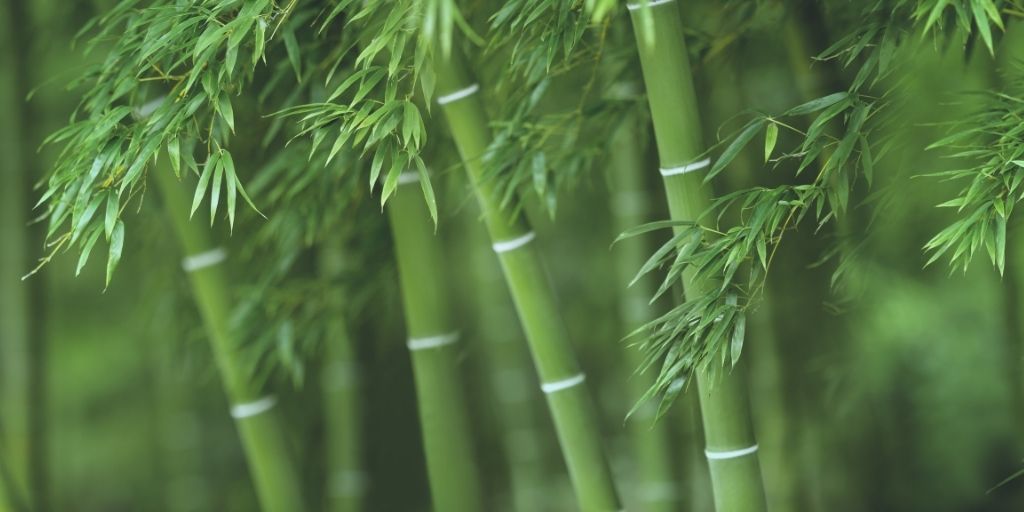
The differences between wicker, rattan, raffia and bamboo
In this article
Introduction
Rattan, bamboo and wicker as well as raffia are omnipresent in the new decoration collections. They put authenticity and know-how back at the center towards a decoration more focused on nature and raw materials. Although they have different characteristics, they are often confused. They all come from different plants and are used in various ways in terms of decoration.
These materials come from very different plants and are therefore structured in different ways.
Know plants to understand them better
The wicker

Willow is a young shoot of willow that is found in cold to temperate regions. It is harvested in winter and then sorted by size of the strands and put into bundles. It will rest for several months in containers with water before being able to make objects from it.
This material is light and strong. It is easy to work with thanks to its flexibility. The different natural colours and the possibility of dyeing it make it one of the natural fibres widely used for making objects such as baskets, lighting or parts of furniture. It is mainly used for weaving.
Rattan

In the form of a vine, it comes from the climbing palm that grows in tropical areas combining both high heat and humidity. Today, it is mainly cultivated in specific plantations for the production of rattan. It is easily worked using steam, which allows it to be given curved shapes. Once cooled, it keeps the worked shape.
Once cooled, it keeps the worked shape
Rattan furniture thus combines aesthetics and quality. It is resistant to temperature differences and humidity. It is also quite light and strong. This combination of course makes it an ideal material for furniture.
Maintenance consists of cleaning them with water containing Marseille soap and then coating them with a little linseed oil.
Raffia

Raffia is produced by a palm tree found mainly in Madagascar. The leaves of this tree are harvested when they reach a maximum of 2 m. They are tied in bundles to dry before being cut into thin vines.
Raffia, on the other hand, is not rigid and strong enough to be used in furniture making.
This material is both flexible and resistant. It is used by gardeners but also by basket makers and craftsmen. It is used to make hats, mats, baskets but also raffia fabric. Raffia can be dyed in a very wide range of colors.
Bamboo

Bamboo is a plant of Asian origin whose stem, called “culm”, is hollow. Unlike rattan, bamboo is hollow inside. This is why everything made of bamboo is much lighter! It is actually a type of grass that is dried. Bamboo is also very resistant and grows very easily and quickly.
It is increasingly considered a more sustainable alternative to wood. In addition, hollow bamboo stems can be used for many applications. Bamboo is not only used for furniture. It is also used for spoons, plates, cutlery and many other objects…
The differences between wicker, rattan, raffia and bamboo. Alternatives to wood.
As we have seen, although close and often confused, these materials come from very different plants and are therefore structured in different ways. They are then used for various manufacturing processes according to their qualities in order to optimize their duration over time.
Wicker looks a bit like rattan, but rattan is very flexible, rigid and very strong. It can support heavy loads and is therefore ideal for creating furniture, which is not the case with wicker, which is much more brittle. This is why the term “wicker furniture” is not entirely accurate. The “wicker chair”, for example, that we all know is usually made of rattan.

Bamboo is also very strong, especially when its culms are of large diameter. It is used to make furniture structures such as sofas, tables or beds which can then be woven with much more malleable and finer rattan. The combination of the two materials is also common.

Raffia, on the other hand, is not rigid and strong enough to be used in furniture manufacturing. It is then used to make decorations such as mirror frames and everyday objects such as handbags, baskets and others. Raffia can also be dyed in a wide range of colors, using pigments, an advantage that other materials do not have.

All these materials represent today, in the assembly and manufacture of furniture and decorations, a very good alternative to wood. They are resistant, durable and above all natural. Qualities highly sought after in the selection of products at Fany, in addition to artisanal manufacturing.










